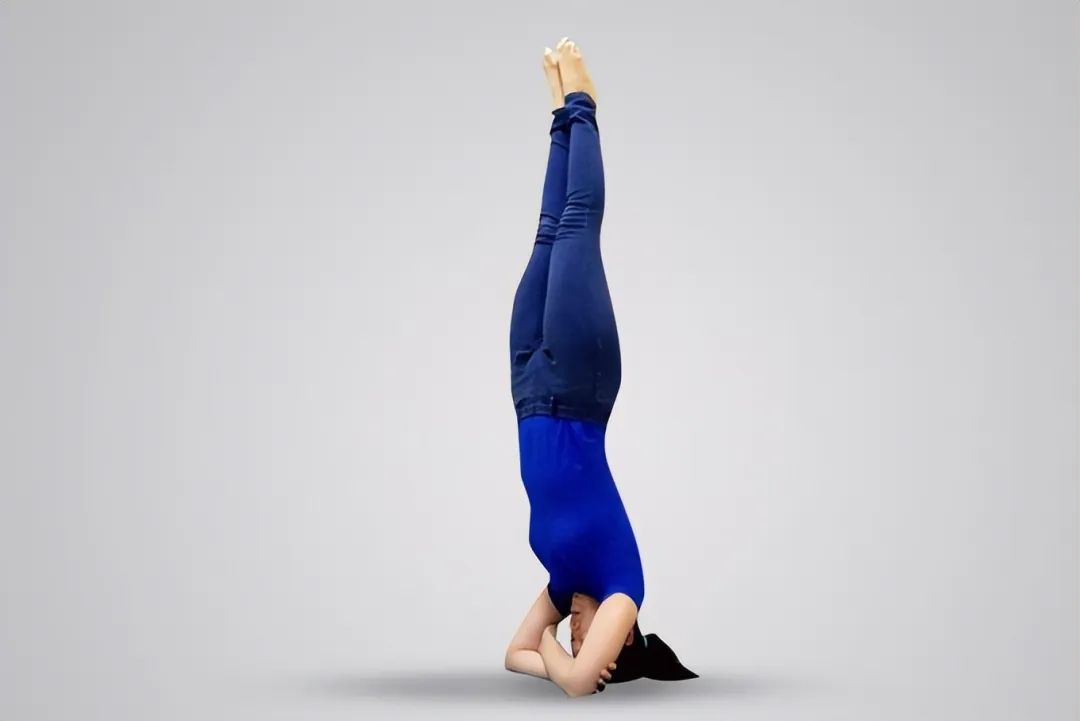Regular practice of Yoga Headstand makes healthy and pure blood enter brain cells.

Therefore, brain cells are more active, thinking ability is enhanced, and thinking is clearer.

This posture is a very good nourishment for those who are prone to brain fatigue.

It can ensure that the pituitary gland and pineal gland get sufficient blood supply.

Today, let’s look at some changes of headstand.

1.

Salambasirsasana.

In this change, the head does not form a cup on the inside of the hand.

Place your head between your hands.

Other steps remain the same as the original posture.

2.

Niralambasirshasana in this change, the weight of the whole body is balanced by the head, and there is no arm support, so it is named.

3.

The handstand with bound hands is here, arms crossed in front of the chest, and hands alternately grasp the upper arms.

Put your folded arms on the ground.

Put your head on the ground above your arms so that your forehead is just behind your forearms.
Lift your knees, straighten your legs, and when you are ready to press your forearms to the floor, lift your legs and enter the position.
4.
After the head handstand is completed, turn the trunk and legs to one side to maintain balance.
The position of the head and hands remains unchanged.
5.
After turning the head handstand into the head handstand, separate the legs by moving the right leg forward and the left leg backward.
Then twist the torso and rotate the legs so that they appear to twist to the left.
6.
Handstand lotus leg after establishing balance in headstand.
Fold your legs into lotus pose.
7.
After balancing with one leg handstand, gradually put the right leg on the ground.
The toes of the right leg should touch the ground as much as possible, while the left leg should be lifted vertically.
8.
Half handstand stops on the way up and down (at the “90 degree position”) and forms an inverted “L” shape with the body.
Benefits of handstand 1.
Improve blood circulation, supply blood to the head, and change flow and pressure.
It improves heart function and provides sufficient blood supply to the head and eyes.
2.
Strengthen the spine head handstand and strengthen the back muscles.
It improves the flexibility of the spine and realigns the spine.
3.
Strong core this yoga pose uses core muscles to lift the legs against gravity, and these muscles remain active throughout the exercise.
This helps increase core strength and endurance.
4.
Stimulate endocrine glands.
When performing handstand, the pituitary gland (main gland) is activated.
Therefore, all other glands are also stimulated to maintain the hormonal flow in the body.
5.
Improve lung vitality.
Due to the inverted position of the body, abdominal organs compress the diaphragm.
It increases the expiratory rate, thereby eliminating carbon dioxide and purifying the lungs.
Removing toxins from the lungs makes them more efficient.
Handstand is a very challenging posture, but life is about overcoming your fears and facing them directly.
If you are a beginner, try the basic headstand first.
Experienced practitioners can try the above changes…

